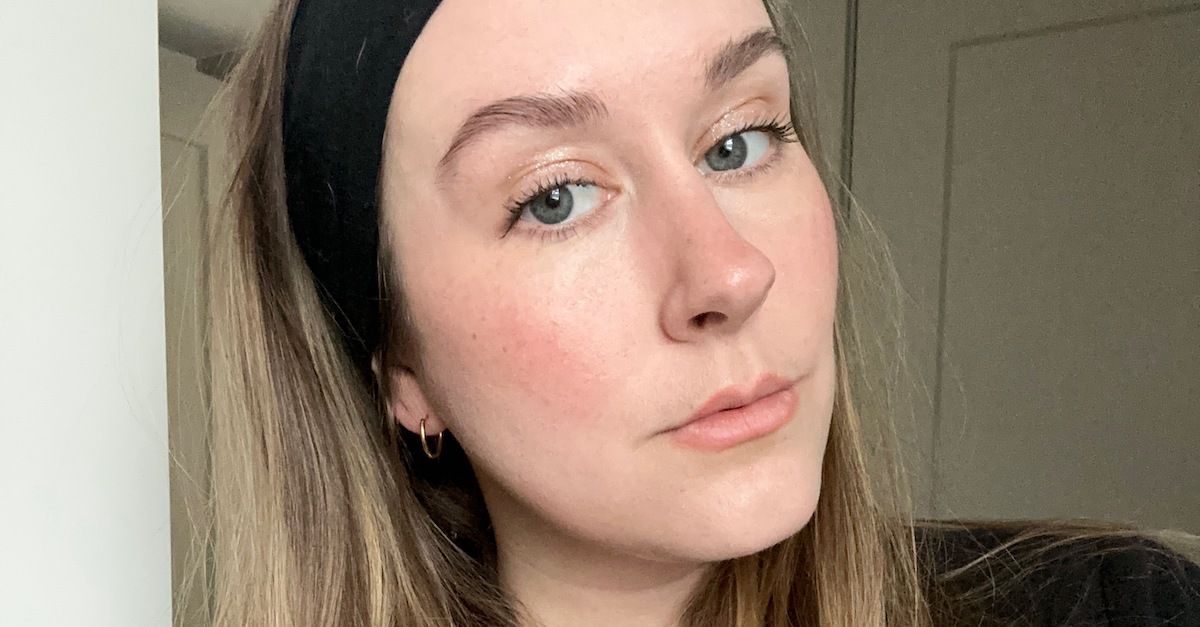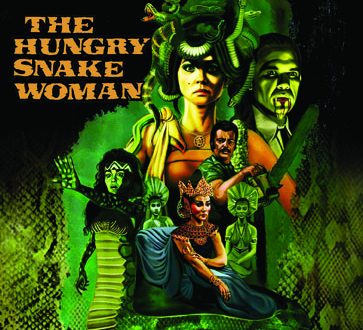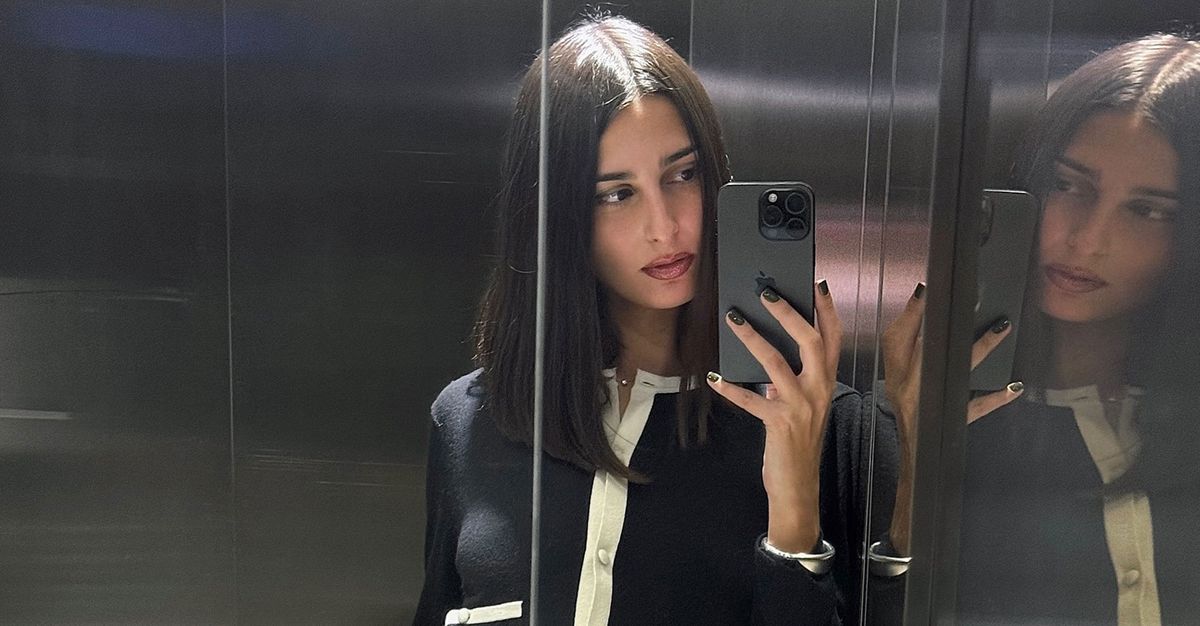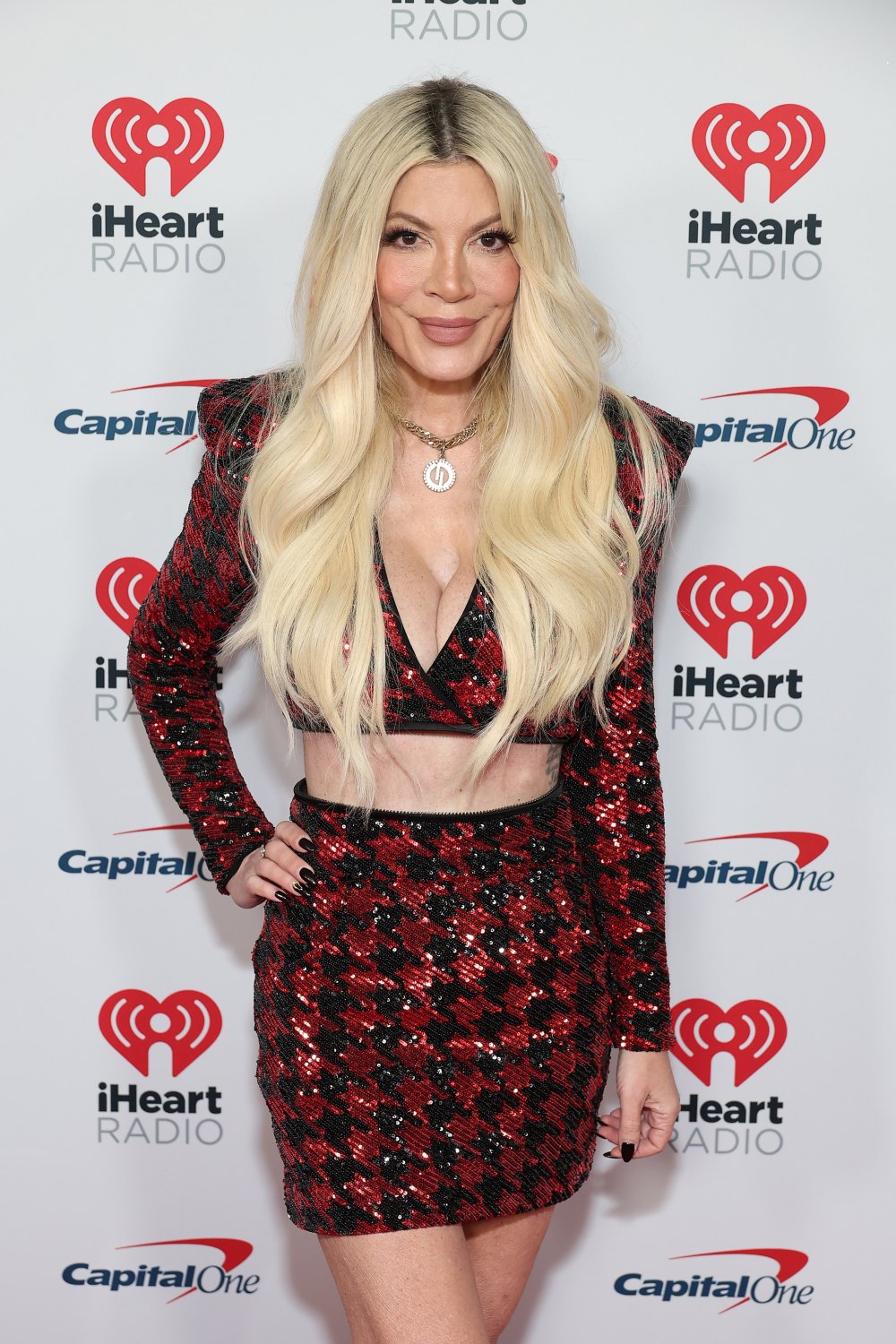On Halloween night, 1988, as Michael Myers lay still on the ground, his young niece touched his hand either out of curiosity, or sympathy, or some unknowable kinship. As her foster sister warned the little girl to stand back, Jamie Lloyd jumped out of the way as a firing squad blasted Michael down a mineshaft to hell. With the evil finally behind them, they returned home, only for Jamie to put on a mask and stab her foster mother in the bath. Covered in blood, the girl stood silently, breathing heavily, and Halloween 4: The Return of Michael Myers came to an end, beginning the cycle a new, and promising a radical new direction if the series were to continue from there.
That was not what we got. Halloween 5: The Revenge of Michael Myers was released only a year later, showing a Jamie who was affected by the trauma of her encounter with the shape, but still a sweet little girl, no more murderous than she had been at the beginning of Halloween 4. Michael Myers returned to Haddonfield for his annual slaughter and for all the movie’s well known eccentricities, it was by all accounts a traditional Halloween sequel. The evil had not been passed on, the possibility that it could not be contained only an apparent myth. Michael Myers was evil, but remained the only one of his kind. Jamie did not take up the mantle or take on a role as an accomplice, as the ending of Halloween 4 had seemed to explicitly suggest. Michael Myers would continue to be the sole face of the series—so to speak—and the future teased by the end of that fourth entry would not come to pass until Halloween Ends hit theaters on October 14th, 2022.
The new film, especially for a finale, is obviously divisive. Spoilers ahead, as we’re going to get into the meat of the story. This movie not only goes in a completely different direction from the two entries before it, but from really any other movie in the series as a whole. Even Halloween III had the benefit of completely wiping the slate clean, so that its brand new, unconnected story was just that. Halloween Ends introduces a new protagonist/antagonist in Corey Cunningham, a boy accused of killing a local child in what was actually a tragic accident. He tries to find a way to move on from what happened, but the town’s perception of him is concrete and unwavering. After being attacked by a literal band of bullies, Corey has an encounter with Michael Myers that leaves him changed. Something happens the moment they lock eyes with one another, and the two become connected. Corey is infected by the evil within the shape, and it grows inside of him (or awakens something within him) until it takes him over completely. From there, it is a glorified remake of Christine with Michael Myers instead of a car.
It is at its very core, not for everyone. Maybe even not for most. It is a big swing, especially for the concluding chapter of a trilogy, not to mention the entire franchise. Allegedly. As someone with a deep love of Jason Goes to Hell: The Final Friday, I am not the person to speak to that particular point. And I don’t want to deride anyone’s tastes if they absolutely despised this movie, but if this movie is not right up my alley, then I truly don’t know my own tastes. What I really want to do though is simply take a look at the specific big swing this movie takes, the central concept of a character becoming infected, possessed, aligned with and even an accomplice to Michael Myers. Because even though that might be incredibly jarring to see play out on screen, it is something that has almost happened several times in this franchise’s 44 year history. It is an idea that has been constantly touched on but never truly explored until now.
The most obvious example would be the end of Halloween 4, as I pointed out, but the kernel of this idea dates all the way back to Halloween II. That film is infamous for its big twist. Laurie becoming Michael’s sister is the first time a protagonist is directly tied to the killer in this series. And she’s never told about it; she pieces it together through dreams, so it is an almost psychic connection there, particularly in her knowing he’s coming for her at the hospital before she possibly could.
Halloween 4 is still the most overt building block. Once the sibling connection was established, it set the franchise down a long path of movies about Michael targeting his family members. This time, he’s after his young niece, Jamie. When she touches his hand at the end, it is incredibly similar to Corey being immediately affected by simply looking into Michael’s eyes. One moment of contact is all it takes. Jamie, after that encounter, puts on a mask and starts stabbing, as does Corey, eventually. I almost think my litmus test for if someone is likely to enjoy Halloween Ends is to look back at any posts they might have made about how the ending of Halloween 4 should have been the new direction for the franchise and ask themselves how much they really meant it. What that movie only teased, Ends embraces. It jumps into that incredibly intriguing, exciting concept of “We don’t know what happened to Michael, we don’t know what transformed him, but what if it happened again?”
Halloween 5: The Revenge of Michael Myers does not completely abandon the supernatural connection between Jamie and Michael by any stretch, but certainly downplays it. One year later, Jamie cannot speak, which could be caused by her trauma or could be a lingering effect of Michael’s psychic bond with her. At the end of 4, she stabbed her foster mother with a pair of scissors, but now she’s using her newfound abilities to track Michael like a nine-year-old psychic detective. It only rarely touches on the darkness of her connection with Michael and what it could mean. The highlight of the movie, as far as this plot point goes, comes in a rare emotional moment for the shape. Jamie asks Michael to remove his mask, sees the face of what could be any ordinary man, and says “You’re just like me,” as Michael sheds a single tear. It’s as if, for just a second, whatever supernatural evil is rooted deep within him loosens its grip. A second later, Michael is disgusted by his own display of emotion and starts destroying everything around him out of what appears to be genuine embarrassment. It’s just a little scene, but it’s so fascinating and raises so many questions about the nature of the evil inside Michael, but it’s never really addressed again.
In Halloween: The Curse of Michael Myers that evil is explained in no uncertain terms. Michael was inflicted with the curse of Thorn, an ancient Celtic curse that would infect one member of a family and cause them to kill their bloodline so that other families would be spared and crops would flourish. Curse is the first movie to directly revolve around the notion that Michael’s evil is something that can be passed onto another, and much of the plot deals with the notion of one cycle ending and another beginning. Though, once again, that does not come to fruition. In both the endings of the producer’s cut and the theatrical cut, Michael survives to continue doing what he does best.
Perhaps the most important movie to examine when thinking of the building blocks of Halloween Ends is Halloween H20, not necessarily for the movie it is, but the movie it could have been. As some fans are probably unaware, that was set to be a very different film before Jamie Lee Curtis returned to the role. Dimension had been ready to send the Halloween franchise direct-to-video as they would do for Hellraiser, The Crow, Children of the Corn and more, thanks to the lukewarm box office of Curse of Michael Myers. Curtis single-handedly saved it from that fate with her suggestion to return for a twentieth anniversary movie. The pre-existing script by Robert Zappia was basically combined with Kevin Williamson’s treatment for a Laurie Strode-centric sequel.
The original concept evolved through several scripts from Halloween: Two Faces of Evil to Halloween: The Revenge of Laurie Strode to finally H20, but it basically dealt with a killer being obsessed with Michael Myers to the point that they would take on the mantle for themselves, only to come face to face with the real shape by the end. It’s intriguing, I’ll admit, but also sounds very much like a Dimension DTV sequel. It’s kind of fascinating to think that the scrapped plot for Jamie Lee Curtis’ first big return to the franchise is so similar to the plot of her final return to the franchise 24 years later.
Rob Zombie’s Halloween II also deals with notions of a character being affected by Michael’s evil, a surprising move for a sequel to what had been an overwhelmingly realistic first movie. This time, the person being affected by Michael is Laurie herself. She sees visions identical to Michael’s own, which Zombie simply suggested on the commentary to be her having an identical illness to her brother, but since absolutely none of that is how mental illness works, it has to be read as some kind of psychic connection. After all, she not only sees visions of her mother before she even knows anything about her own origin, she sees her dressed in the same clothes that Michael sees, and there are points when she and Michael are literally interacting with the same vision at the same time.
The two versions of Zombie’s Halloween II end very differently. In the director’s cut, Laurie is shot down by the police while standing over Michael’s body, and as she dies, she sees a long white hallway, smiling a broken smile as she accepts her own death. The theatrical cut, however, does not kill Laurie, and that final shot of the hallway only looks like she has been taken away and her smile looks like the grin of someone who has finally given in to the rage and violence that has been tightening its grip on her throughout the film. It looks like she’s taking up the mantle for what appears to be an unequivocally dead Michael, and is extremely similar to the tease at the end of Halloween 4. Again, that obviously didn’t happen.
David Gordon Green’s new trilogy has dealt with this concept from the beginning. Taken on its own, 2018’s Halloween is actually the first sequel to inject a second killer into the heart of the story with Dr. Ranbir Sartain. Touted as the “new Loomis” he’s actually the anti-Loomis in that Sartain has no intention of stopping Michael. In fact, he is so obsessed with learning the pleasure Michael feels by killing that he appears to kill Officer Hawkins just to feel that for himself. However, Halloween Kills reveals that Hawkins lived and Sartain didn’t actually kill anyone, right in its opening scene. Much of Kills is even about the opposite; rather than a killer following in Michael’s footsteps, the town’s fear of him turns them into a rampaging vigilante mob that leads to the death of a man they wrongly believe to be Myers. It’s a heavy handed, blunt, and gruesome scene about how their paranoia has turned them into monsters, that ends with Brackett literally saying that it has turned them into monsters.
Finally, all of these elements come together in Halloween Ends. With Laurie Strode now representing the hope of overcoming a traumatic past and Michael Myers representing what happens when you succumb to violence entirely, enter new character Corey Cunningham, poised directly in the middle between the two. Like Laurie, he was a babysitter, and like Michael, he’s a town pariah. Corey, at the beginning, simply wants to go about his life. He was a good kid in a miserable situation. Both he and Laurie are harassed simply for things that have happened to them, and that connection is important, because Halloween Ends is at its core about the fact that you cannot control people’s perception of you, you can only control how it changes you. The supernatural turn, and the metaphor, come about when Corey first looks into Michael’s eyes and that infection, and kinship between the two, begins.

(from left) Billy (Marteen), Corey (Rohan Campbell) and Terry (Michael Barbieri) in Halloween Ends, co-written, produced and directed by David Gordon Green.
I can’t even express how it felt to finally see that. This was a scene I’d seen play out before in Halloween movies, as I’ve pointed out. It felt so similar to Halloween 4, in particular, only now it’s not coming at the very end to tease a sequel that the next filmmakers are by no means obliged to make. Now it’s coming at the end of the first act. This is, finally, that movie. The notion that Michael’s supernatural evil can be strengthened or dormant from moment to moment from Halloween 5 is in there when a feeble, broken Michael stabs a cop to restore his own strength. The idea that the cycle is beginning anew, a background plot point from Curse, is central to this film. The rejected plot of H20, in which a young imposter takes on the mantle of the shape is the whole concept of Halloween Ends.
Whether on a large or small scale, all of these things made it into this film that is all about internalizing an external evil, exploring the concepts of Halloween from the inside out. And as out-of-left-field it is for a franchise finale, it ties itself back to the original in some clever and surprising ways. For example, Michael kills three people in the movie, the same amount he killed on Halloween night 1978, has almost the same screen time as the original, and Laurie is not aware of the threat of Michael until the moment she comes face to face with him, just like the first time.
For only focusing itself as a sequel to the 1978 classic, this trilogy has always kept the other sequels in mind. Like Halloween II, Halloween Kills features a bigger body count while Laurie gets sidelined in the hospital. There are kids running around in the Silver Shamrock masks from Halloween III. The mob leading to Tivoli’s death in Kills is extremely similar to the group of drunken rednecks who accidentally shot local citizen Ted Hollister in Halloween 4. On this level, Halloween Ends is not a surprising supposed end to this series, because it is factoring in the saga as a whole to an even greater degree than its predecessors. Halloween Ends takes all of these abandoned threads, all these promises of a wildly different take on the Halloween formula and simply makes that movie. As divisive as it is, no matter how time treats it or how its reception changes if at all, it will always be a fascinating footnote in a larger legacy.
And I, for one, am grateful for it.


























































![Mason Ramsey – Twang [Official Music Video] Mason Ramsey – Twang [Official Music Video]](https://i.ytimg.com/vi/xwe8F_AhLY0/maxresdefault.jpg)





















